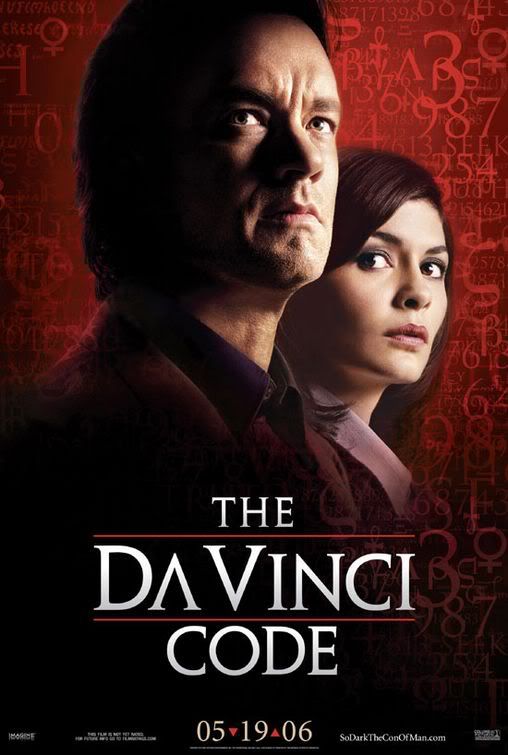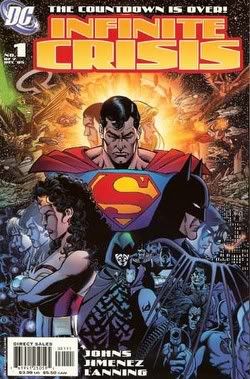 A mysterious murder in the Louvre brings Harvard symbologist Robert Langdon (Tom Hanks) and French police officer Sophie Neveau (Audrey Tautou) into the middle of a 2,000 year old conspiracy that involves the Holy Grail and the Catholic Church. Finding they are being framed for the murder, Langdon and Neveau must run from the French police led by Captain Bezu Fache (Jean Reno). As if that is not dire enough, they also have to evade the murderous Silas (Paul Bettany), an Opus Dei monk in search of the Grail. Aided by Grail expert Sir Leigh Teabing (Ian McKellen), Langdon and Neveau try to uncover the mystery behind the Holy Grail.
A mysterious murder in the Louvre brings Harvard symbologist Robert Langdon (Tom Hanks) and French police officer Sophie Neveau (Audrey Tautou) into the middle of a 2,000 year old conspiracy that involves the Holy Grail and the Catholic Church. Finding they are being framed for the murder, Langdon and Neveau must run from the French police led by Captain Bezu Fache (Jean Reno). As if that is not dire enough, they also have to evade the murderous Silas (Paul Bettany), an Opus Dei monk in search of the Grail. Aided by Grail expert Sir Leigh Teabing (Ian McKellen), Langdon and Neveau try to uncover the mystery behind the Holy Grail.For a thriller, The Da Vinci Code severely lacks suspense. There is no sense of urgency in Langdon and Neveau’s quest to solve the numerous puzzles. The book has the luxury of space in building the suspense. The movie, unfortunately, has not. The book could dedicate ample number of pages to describe a predicament, explain its imminent threat, and go over the interesting way Langdon and Neveau solve it. For obvious time constraints, the movie has to blaze through the puzzles, barely explaining anything along the way, and completely robbing the movie of suspense.
With the suspense diminished, all that is left of the story are the weak plot and even weaker characters. But these flaws couldn’t be blamed solely on director Ron Howard and writer Akiva Goldsman. The decision to have the script stick very close to the novel just accentuates the flaws of the novel. Author Dan Brown didn’t exactly create a masterpiece with his novel. The Da Vinci Code is basically a mystery with a ludicrous plot that hinges on a number of coincidences. Brown didn’t even try to inject his characters with personality. All it had going was the controversial conspiracy theory and the intriguing puzzles.
Not given a solid script, the cast’s performance suffers. The always likeable and talented Tom Hanks is shockingly bland. Hanks has a promising start as Langdon delivers an insightful lecture on symbols very early in the movie, but for the rest of the movie his talents are wasted on a dull character. Meanwhile, Audrey Tautou is equally dull as Sophie Neveau. Even worse, Tautou has to deliver overly melodramatic lines with her sometimes indecipherable accent. The bright part of the acting arrives about one hour into the movie, when Ian McKellen’s Teabing shows up. The Shakespearean actor is given the best lines of the movie and delivers them with candor and playful energy that the movie sorely misses.
Visually, The Da Vinci Code is appealing. The photography manages to create a sense of dread and an ominous tone throughout the movie. The gothic churches, castles, museums sure help. But the best treat Ron Howard comes up with is the nifty visualization effects to the lengthy and potentially boring expositions. Howard backdrops Langdon and Teabing’s history lesson on the Crucifixion, the Christian Roman Empire, and the Crusades with a CGI-enhanced representation of the events. The result is a ghostly and magical vision of the past that evokes a sense of wonder.
In the end, no visual treats could inject adrenaline to this dull movie. Had Howard and Goldsman reconsidered their approach of essentially filming everything in the book, The Da Vinci Code could be a taut and suspenseful thriller, instead of this lackluster effort. A tighter script would have been a huge difference. Not that it would matter to its box office performance The hype and controversy already guarantee that viewers would come in droves and probably make The Da Vinci Code the highest grossing movie of the year.
